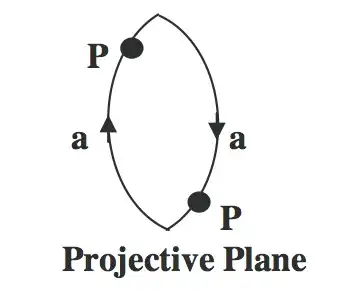I was reminded by question 77569 about something that has bothered me off and on for a while now. Consider the model of the projective plane given by the last diagram on page 37 of these notes (it's just a lens-shape in the plane, with opposite sides identified in a "chasing" way):

Now if you remove an open disk from it, what's left, call it $M$, is homeomorphic to a Möbius strip. Unlike the projective plane, the Möbius strip can be embedded in ${\bf R}^3$ with no self-intersections. So it's natural to ask whether you can use the model $M$ to construct a physical Möbius strip. That is, does the presence of the hole make it possible to carry out in 3-space the indicated identification of edges, without tearing or self-intersection, provided the material being used is sufficiently elastic.
Experiments with paper have not been encouraging. Is there some obstruction to making a Möbius strip from $M$?
Another plane model for a Möbius strip is a triangle with 2 edges identified "chasing" and one edge unidentified. The 2nd figure on page 40 of those notes will do as an illustration. Again, I haven't been able to carry out the identification with paper in 3-space; is it possible? or is there some obstruction?
I should add that of course I know that one can make a Möbius strip from the usual model, a rectangle with one pair of opposite edges identified chasing. And I know that these other models are homeomorphic to the Möbius strip. The questions are about using the other models to make a Möbius strip.